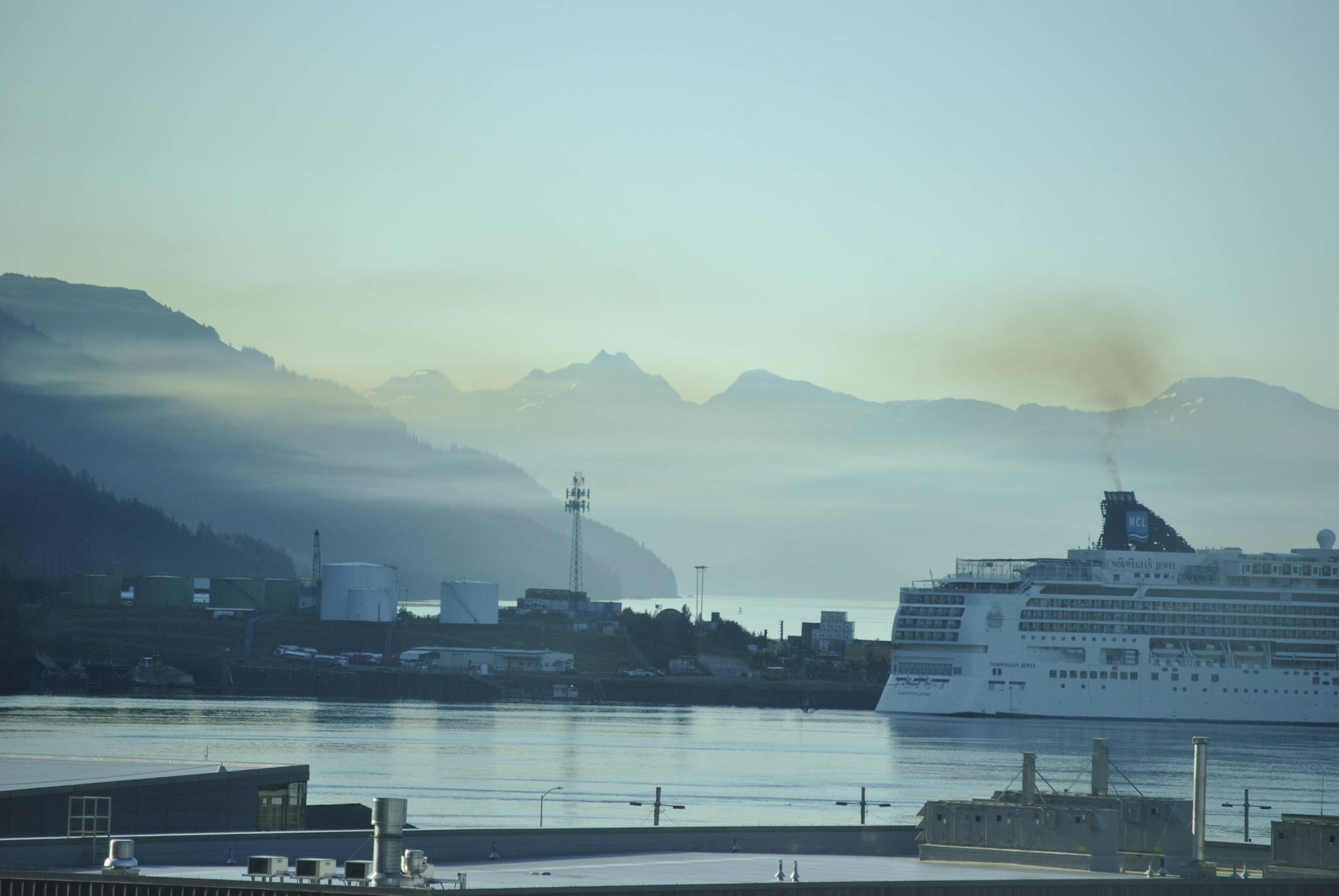Complaints over cruise ship emissions are rising, according to the Department of Environmental Conservation, partly due to excessive blue haze from cruise ship exhaust stacks.
That haze does not necessarily mean an increase in pollution from the ships: It’s the result of an interaction between steam from newly-adopted sulfur scrubbers and normal cruise ship emissions.
Cruise ships started installing the scrubbers two years ago, said DEC Environmental Program Specialist Denise Wiltse, to meet new emissions caps adopted by the International Maritime Organization. Since then, complaints have increased. So far this year, 38 people have called DEC to report a suspected violation of emissions guidelines. That’s well on pace to pass last year’s total of 66 complaints.
“I can tell you that in 2016 we had zero complaints and it’s really skyrocketed the last year and (this year) is reaching the same level as 2017,” Wiltse said.
Exhaust stack emissions are judged by their opacity, or how well one can see through them. The judging is a bit complicated. Opacity is measured on a percentage scale based on standards outlined by the Environmental Protection Agencies “Method 9.” One hundred percent means you can’t see through it. Zero percent opacity means the emissions are invisible.
While at berth of anchor, a ship’s emissions are only allowed to exceed 20 percent opacity for three minutes out of an hour. That jumps to 40 percent when a ship is casting off or anchoring, when they might need to rev up their engines to make quick moves in tight spaces. They can also exceed that 40 percent opacity for a total of nine minutes when casting off.
Cruise ship monitors are trained in Method 9 and must pass a test. Juneau has three of these lookouts. One’s working nearly every day during the cruise ship season, Wiltse said. Three more DEC staff, including Wiltse, are trained to spot violations and look out for violations occasionally.
What they’re seeing, Wiltse said, is that the emissions from sulfur scrubbers, which often are released at the same point as emissions from exhaust stacks, are mixing, creating a blue-hued haze above the stack. A circulating system of seawater scrubs the sulfur from the emissions, returning it to a tank on board. The process produces steam, which mixes with the ship’s exhaust.
“What we’re seeing more is kind of a bluish grey and white as well because of the steam plumes, because a lot of the cruise ships have installed scrubber systems, so typically there are large amounts of water being introduced to the system,” Wiltse explained.
But just because the bluish-grey haze might be the result of an effort to cut back on sulfur emissions, that doesn’t mean cruise ships might not also be violating standards.
According to DEC’s 2017 report, DEC handed out two violations last year to cruise ships, the Norwegian Jewel and the Amsterdam, which were both cited in Ketchikan. Those violations can be as high as $46,192, a fine which was raised this year from $37,500, Wiltse said.
People calling to complain often about “excessive smoke, as well as that blue haze hanging downtown or down the channel,” Wiltse said.
Possible violations can be reported to DEC at 465-5278. Wiltse advised plume watchers to put the sun at their backs when observing ships.
“When it comes to reading the plume, there are different things to take into account. The sun needs to be at your back when you’re taking a reading,” she said. “Because if you’re looking at the plume with the sun behind it, it’s going to give off a greater luminescence. So it will look much worse than it could be. Not to say that it’s not out of compliance, you just have to be in a proper positioning to get a good reading,” Wiltse said.
• Contact reporter Kevin Gullufsen at kgullufsen@juneauempire.com. Follow him on Twitter at @KevinGullufsen.

